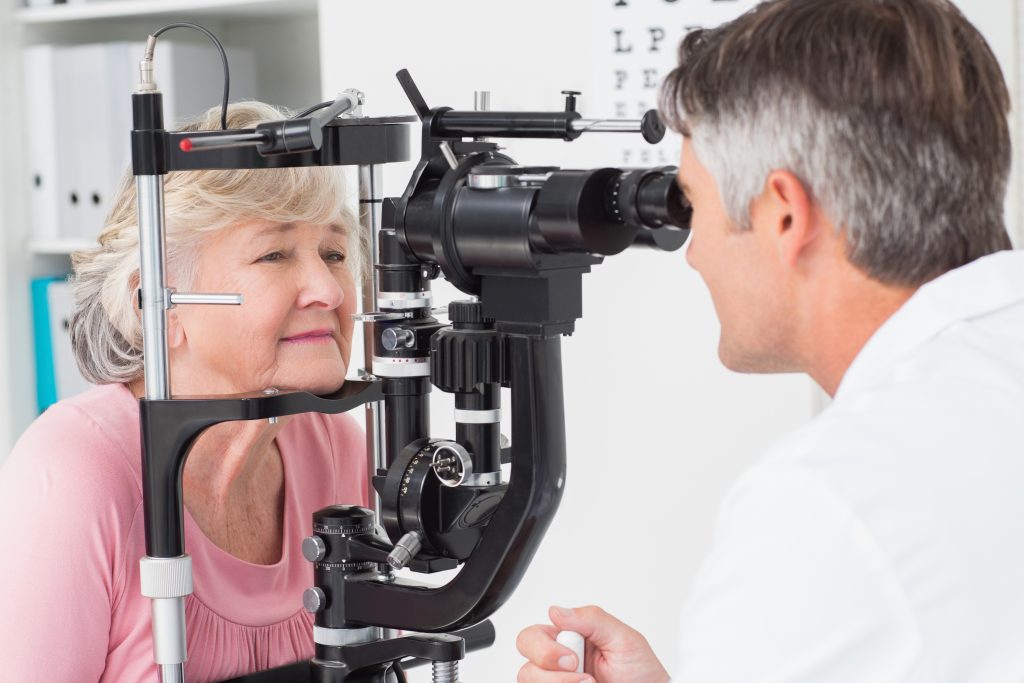January is National Glaucoma Awareness Month. According to glaucoma.org: “Glaucoma is a complex disease in which damage to the optic nerve leads to progressive, irreversible vision loss. Glaucoma is the second leading cause of blindness.”
There are two different types of glaucoma: open-angle glaucoma and angle-closure glaucoma. Open-angle glaucoma is the most common. Unfortunately, the onset of open-angle glaucoma isn’t usually accompanied by any symptoms. By the time symptoms appear, vision damage is already extensive, as the disease progresses so gradually.
Visit WebMD to learn more about open-angle glaucoma.
As for angle-closure glaucoma, early treatment can intervene and prevent the issue from causing severe permanent damage. However, like open-angle glaucoma, angle-closure glaucoma isn’t symptomatic much of the time, either. That said, if symptoms do appear, they can include “hazy or blurred vision, severe eye and head pain, nausea or vomiting (accompanying severe eye pain), the appearance of rainbow-colored circles around bright lights, or sudden sight loss,” according to glaucoma.org.
For more information on acute angle-closure glaucoma visit WebMD.
Ultimately, it’s so important to visit an opthamologist if you can, especially if you’re a senior citizen, as older individuals face a higher risk of developing glaucoma. Even if you don’t feel that you’re experiencing overt eye problems, it’s helpful to go in for a check-up for preventative measures.
While no person is immune to glaucoma, specific risk factors for glaucoma include:
• Being 60 years of age or older, as those 60+ are six times more likely to develop glaucoma.
• Genetic family history of glaucoma
• Being African-American/black, Hispanic, or Asian
• Past eye injury
• Past steroid usage
• High myopia (nearsightedness)
• Hypertension
• Central corneal thickness less than .5 mm.

How does one get diagnosed with glaucoma? Here are a few methods and tools that ophthalmologists use:
Visual field testing (otherwise known as perimetry)
The Glaucoma Foundation noted that a physician may test your field of vision to reveal your eyes’ level of damage. You will be asked to lean your chin on a stand and look at a computer screen. The computer will flash a series of lights, and you press a buzzer every time you see a burst of light. The lights will appear in various locations to test both your peripheral and straight-on sight. As you perform this task, the computer registers how quickly your eyes notice the lights, and registers which areas you struggle to see. People dealing with severe glaucoma may have extensive damage and will miss many of these triggers.
Tonometry (also known as an eye pressure test) and ophthalmoscopy
The Glaucoma Research Foundation wrote that tonometry and ophthalmoscopy are commonly used in routine eye tests to check for forms of glaucoma. To measure the pressure in your eye, a doctor or technician uses a tonometer to measure how your eye reacts to a small puff of air. Each individual’s eye pressure is unique, but glaucoma is most common between 12 and 22 millimeters of mercury (the scale that physicians use to record eye pressure).
You may have also encountered ophthalmoscopy in a routine eye exam. A practitioner will place eye drops in both eyes to dilate your pupils. The doctor will then shine a light into your eyes to detect any optic nerve damage.
Gonioscopy
The angle that fluid drains out of the eye can have a major effect on whether a person has glaucoma. The blood vessels and pigmentation in the skin around the eye area may also play a role. Gonioscopy can help with this. During this procedure, the eyes are numbed with anesthetic drops, and then contact lenses with mirrored insides are placed over the eyes. The doctor can then see into the eye in varying directions to check that fluids are able to properly drain. Narrow angles in the trabecular meshwork (area where drainage occurs) may cause acute glaucoma and even block fluid from draining away from the eye.
Glaucoma calls for a variety of different kinds of tests because there are many different factors that can indicate whether or not a person has this condition. If you are concerned that you may have glaucoma, call your eye doctor to schedule an appointment right away.
If you found an error, highlight it and press Shift + Enter or click here to inform us.



